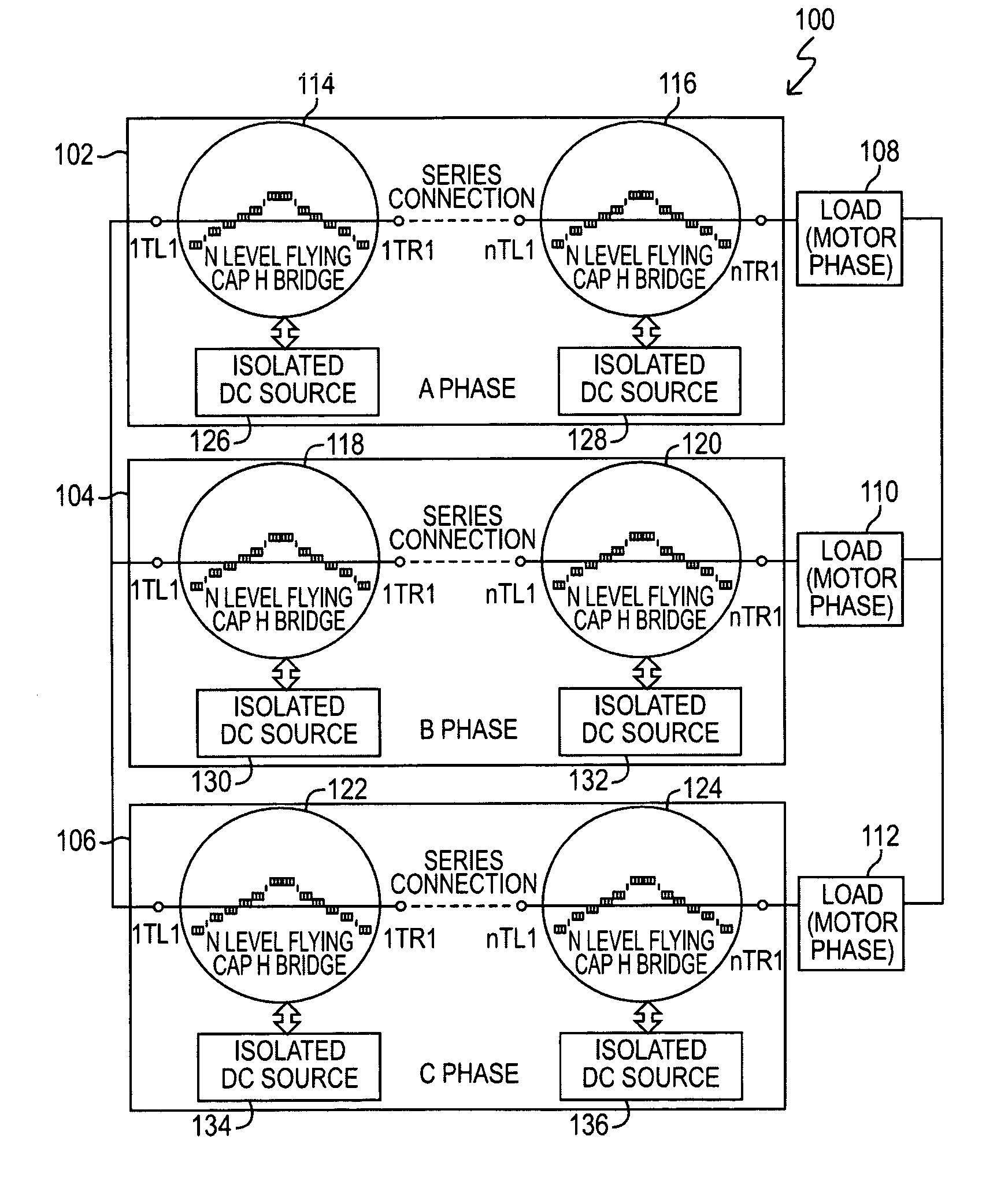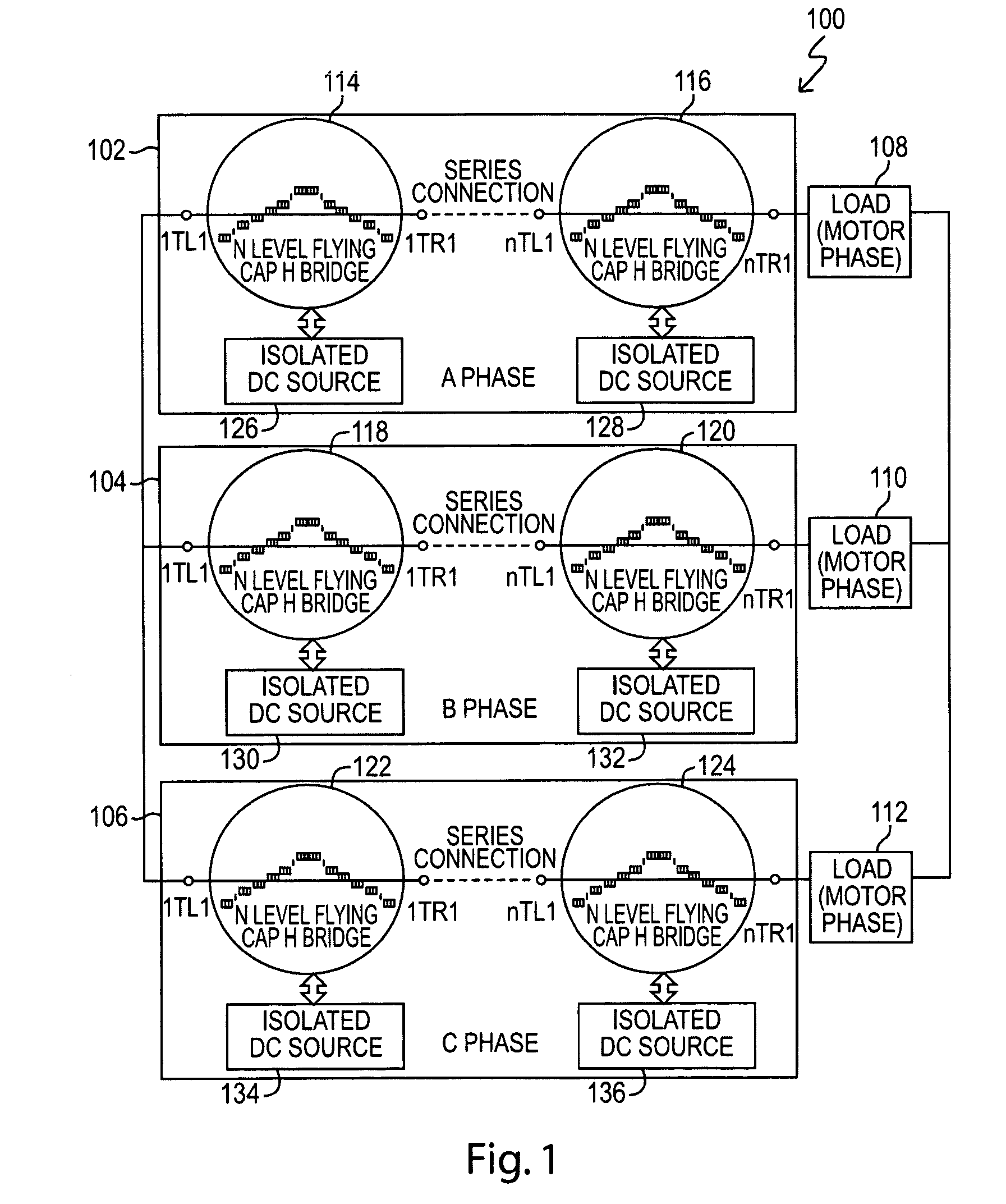Cascaded flying capacitor modular high voltage inverters
a high-voltage inverter and cascade technology, applied in the field of power inverters, can solve the problems of high switching loss, adversely affecting the harmonic content of output waveforms, and conventional medium-voltage power inverter designs that produce compromised outputs, etc., to achieve the effect of reducing the number of cascaded stages, reducing the total harmonic distortion, and increasing the flexibility of system design
- Summary
- Abstract
- Description
- Claims
- Application Information
AI Technical Summary
Benefits of technology
Problems solved by technology
Method used
Image
Examples
Embodiment Construction
[0023]Reference will now be made in detail to an implementation in accordance with methods, systems, and articles of manufacture consistent with the present invention as illustrated in the accompanying drawings. The same reference numbers may be used throughout the drawings and the following description to refer to the same or like parts.
[0024]FIG. 1 shows an illustrative cascaded flying capacitor multi-level inverter 100 consistent with the present invention. The illustrative inverter is a three-phase wye connected inverter, where each phase 102, 104, 106 consists of a plurality of multiple voltage level flying capacitor H bridge inverter modules (“FCHBIM” or “module”) connected in series. In the illustrative example, phase A 102 includes modules 114 and 116, phase B includes modules 118 and 120, and phase C includes modules 122 and 124.
[0025]A load 108, 110, 112 is connected at to each respective phase 102, 104, 106. The illustrative loads 108, 110, 112 are each shown as wye conne...
PUM
 Login to View More
Login to View More Abstract
Description
Claims
Application Information
 Login to View More
Login to View More - R&D
- Intellectual Property
- Life Sciences
- Materials
- Tech Scout
- Unparalleled Data Quality
- Higher Quality Content
- 60% Fewer Hallucinations
Browse by: Latest US Patents, China's latest patents, Technical Efficacy Thesaurus, Application Domain, Technology Topic, Popular Technical Reports.
© 2025 PatSnap. All rights reserved.Legal|Privacy policy|Modern Slavery Act Transparency Statement|Sitemap|About US| Contact US: help@patsnap.com



